The causes of some garden tragedies are obvious, while other causes are mysterious. When Colorado potato beetles eat every leaf and your potatoes never get larger than golf balls, there really is no puzzle to solve. But sometimes gardeners don’t know what went wrong, and they chalk some problems up to a bad season, when a tiny insect or hidden disease actually caused the problems. You can’t do anything about crop failures in New England in September, but the following clues to and remedies for common problems should help next year.
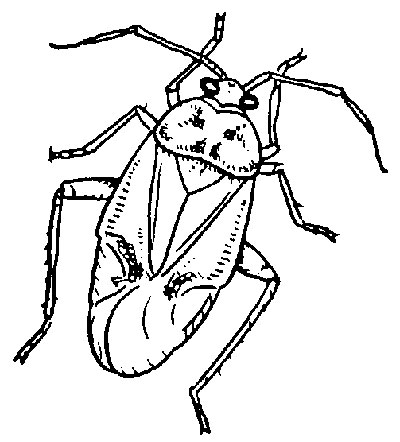 |
| Tarnished plant bug. Length 1/4 inch. Illustration from Handbook of the Insect World, University of Kentucky College of Agriculture, Cooperative Extension Service. |
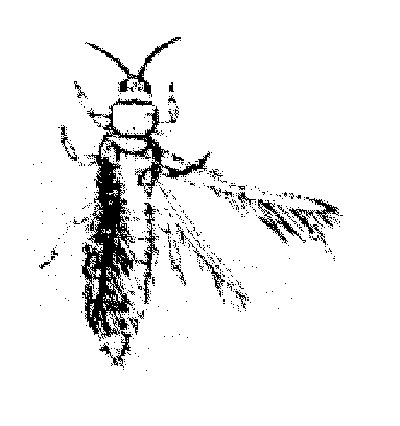 |
| Onion thrip. Illustration from Insects and Diseases of Vegetables in the Home Garden, USDA Agricultural Information Bulletin No. 380, Superintendent of Documents, U.S. Government Printing Office, Washington D.C. 20402. 1980. |
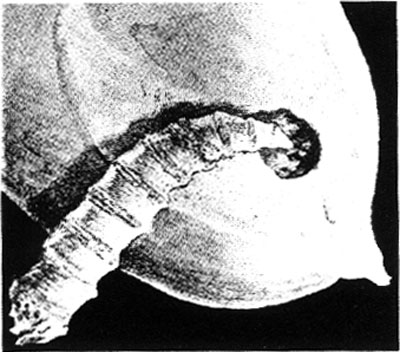 |
| Seed corn maggot. Illustration from “Corn Insects – Below Ground,” Picture Sheet No. 5, USDA. |
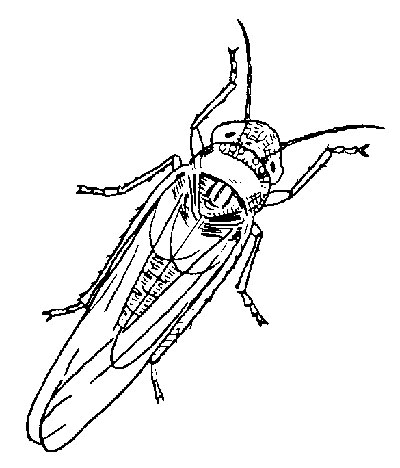 |
| Potato leafhopper. Length 1/8 inch. Illustration from Handbook of the Insect World, University of Kentucky College of Agriculture, Cooperative Extension Service. |
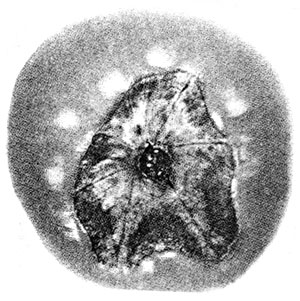 |
| Blossom-end rot of tomato. Photo from Insects and Diseases of Vegetables in the Home Garden, USDA Agricultural Information Bulletin No. 380, Superintendent of Documents, U.S. Government Printing Office, Washington D.C. 20402. 1980. |
Peppers and Eggplants
I commonly hear about big beautiful plants and no fruit, and the most common guess at the cause is excess nitrogen. While that could be the cause, too much nitrogen is not a common problem for organic gardeners, except for those using excess blood meal. Two more common causes for delaying that first bowl of salsa because of lack of jalapenos are weather and insect attack. Hot days early in the season are uncommon, and when they do occur you can’t do anything about them, but temperatures above 90 can prevent pollination and fruit set.
Blossom drop due to feeding by the tarnished plant bug (TPB) is even more common in some places. These little sucking insects attack the buds, which drop off without developing into fruit. If you have big, beautiful pepper or eggplant plants and lots of buds and still no fruit, think tarnished plant bug. This very common pest feeds on about 300 species of plants and many crops, so crop rotation will do nothing. The worst case occurs when a nearby field of alfalfa is mowed when your pepper crop is budding, and the TPBs rush to your peppers. To prevent this problem, cover your peppers and eggplants early next season with a floating row cover at least until the flowers open. This makes sense anyway, because these crops do not like those chilly, early June nights in Maine.
Onions
Do you have big, beautiful onion plants until about halfway through the summer, then have the onions turn yellow early, fall over and leave you with onions that are smaller than radishes? This could be due to drought, lack of nitrogen or botrytis, but have you ever looked for thrips? Thrips are tiny (about one millimeter long, and slender) and they hide near the base of the plant between the leaves that are close together. The best way to sample for thrips is to harvest some plants, remove all the leaves and shake them over a suitable surface. As few as five thrips per plant per season affect yield. Thrips do the most damage in hot, dry summers. Cultural controls can reduce the damage significantly. Onion thrips overwinter in onions and other hosts (especially alfalfa, but to some extent many garden crops, such as cucumber, pea, pepper and squash). Volunteer onions are often the source of the initial infestation in the spring, so fall sanitation is important if thrips have been a problem. Heavy overhead irrigation will reduce thrips populations, often eliminating the need for chemical control. If sprays are needed, the new, organic formulation of spinosad (Entrust) is said to work well.
Corn and Beans
Very spotty stands of corn are often blamed on the seed but usually are due to crows or the seed corn maggot. Crows will even go after seed after it sprouts and the plants are an inch tall. Sometimes you can find the little sprouts lying on the ground, with the seed gone. Silvery scare tape is said to work, as is a string tied a few inches above each row. I cover my corn with a 30-foot-wide row cover, so I have not tested scare tape or string.
The seed corn maggot is not so obvious. This fly larva, or maggot, feeds on corn or bean seeds and is a common problem for people like me who strive for the first corn on the block. In cold soil, especially when the weather is cold and damp too, the seeds germinate very slowly, giving the fly’s egg time to hatch and the larvae a chance to attack. If you do not see germination in the expected time, check the seeds for maggots. If they have eaten the seed, you can replant. The only sure-fire protection is to wait for the soil to warm before planting these crops so that they germinate quickly. Of course, I don’t take that advice but take my chances every year, planting corn and beans on May 15th. Transplants work well for avoiding seed corn maggot; I put out two-week-old transplants on May 15 under a floating row cover.
Potatoes
When folks ask me what organic potato growers use to top-kill their plants before the fall harvest, I joke that organic growers rarely have live potato plants then. While this is only a joke, many potato growers do have a problem with potatoes dying early – for a number of reasons. The most common is feeding by the potato leafhopper. The initial damage consists of yellowing of the tips and edges of the leaflets. Gradually the leaflets curl up and inward, and the edges die and turn brown, resulting in what is called “hopper burn.”
Potato leafhoppers do not overwinter in temperate climates. Each year they spread north on winds out of the Gulf area. Some leafhoppers are almost always around during the growing season, but only some years are the numbers high enough to cause hopper burn and early death of whole plantings of potatoes (and beans). No cultural practices have proven effective in controlling the hopper. Varietal resistance does seem to occur but has not been substantiated yet.
To confirm that leafhoppers are numerous, brush your hand over the tops of the rows and see if lots of them fly up. Rotenone has no effect on this insect, but pyrethrum does.
Blossom-End Rot of Tomato and Summer Squash
Everything seemed to be going fine until just before the fruit ripened, then you noticed the end of the fruit where the flower was attached was turning brown and rotting. This is a noninfectious disease, i.e., no pathogen causes it. Instead, it is caused by calcium deficiency in the fruit, which is usually associated with drought or poor water management in irrigated plots. Calcium is not very mobile in the plant, so during times of water stress, the fast growing regions of the plant suffer. Providing uniform moisture will usually prevent the problem. Supplemental calcium may be needed, but rarely.
Lettuce
Sometimes aster yellows affects only one or two plants, other times it can take down the whole crop. The first symptoms are chlorotic center leaves that fail to develop normally, remaining short and stubby or twisted. Light brown latex deposits on the underside of the midribs are diagnostic. Aster yellows is caused by an unusual, mycoplasma-like organism. These prokaryotic cells inhabit the phloem (food conducting cells) of lettuce and are transmitted from plant to plant by the aster leafhoppers in which they can live and multiply. The pathogen survives the winter in perennial weeds and crops and is picked up by the aster leafhopper in the spring. If aster yellows was a problem, control perennial weeds in the field margins and do not mow crops such as clover when lettuce is young.
Eric Sideman is MOFGA’s director of technical services. You can contact him at the MOFGA office or at [email protected] with your questions about organic growing.
